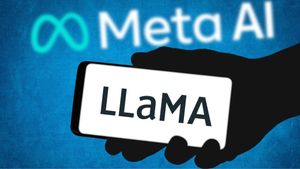The conflict in eastern Democratic Republic of Congo (DRC) has reached new heights as the M23 rebel group, which the United Nations reports to be backed by Rwanda, has made significant territorial gains, seizing cities such as Goma. This resurgence of violence raises urgent questions about regional stability and the effectiveness of international intervention efforts.
On January 27, 2025, Goma fell to the M23 following intense fighting, marking one of the most significant escalations of this long-standing conflict. The Congo's largest city now bears the signs of chaos, with at least 773 fatalities reported and many more wounded amid what has been termed one of the worst humanitarian crises the region has faced. Congolese government spokesman Patrick Muyaya stated, “These figures remain provisional because the rebels asked the population to clean the streets of Goma. There should be mass graves and the Rwandans took care to evacuate theirs.”
The M23 has positioned itself as the most formidable force among over 100 armed groups operating within the resource-rich eastern provinces of the DRC, where mineral deposits are plentiful. The conflict has its roots deep within ethnic tensions and regional disputes, fueling direct military engagements from neighboring countries, particularly Rwanda, which has been accused of supplying both arms and troops to the rebels.
Efforts to address the conflict through regional partnerships have proven insufficient. The East African Community Regional Force (EACRF) was established to disarm various armed groups, yet was roundly criticized for its passive approach, avoiding direct engagement with the M23. Less than one year after deployment, the Congolese administration refused to extend the EACRF's mandate, citing ineffectiveness and complicity with the M23 fighters. “The EACRF had been deployed to confront the March 23 movement (M23)...the DRC government claimed the EACRF was ineffective at best, and complicit with the M23 at worst,” according to reports on the force's performance.
The backdrop of this crisis is not just military engagement but also political maneuvering on the part of regional leaders. Rwandan officials, including Minister of Foreign Affairs Olivier Nduhungirehe, have been vocal about their stance, asserting, “We will not allow Rwanda to be scapegoated for the failures of DR Congo government.” Tensions escalated during discussions at the Southern African Development Community (SADC), which have sought to stabilize the situation but have been met with mutual accusations of aggression among member states.
The villages around Goma are littered with the debris of warfare, and humanitarian organizations are ringing alarm bells about the growing number of internally displaced people. Reports indicate humanitarian operations have ground to nearly complete halt since M23’s offensive, creating dire conditions for thousands who were already suffering from the ramifications of prior conflicts.
“The escalation of violence toward Bukavu raises fears of even greater displacement,” said Rose Tchwenko, the country director for Mercy Corps. The tug-of-war between governments and rebel factions has compounded challenges for those living under the shadow of conflict, leaving extensive populations without access to aid and basic services.
While M23 has captured key territory, the fight for power reflects broader regional dynamics. Rwanda's interventionist policies have often been met with skepticism and criticism by neighboring states, which accuse Kigali of exacerbation rather than resolution of the conflict. Meanwhile, Rwandan political leadership advocates for dialogue and resolution, as articulated by Nduhungirehe, who emphasized the necessity for sincere regional discussions.
Moving forward, it remains unclear what pathways to peace can be forged, especially as military engagements increase and diplomatic partnerships face their own crises. The international community's response and readiness to implement effective intervention strategies will undoubtedly be tested amid the rapidly deterioring humanitarian situation and uncertain political landscapes.
With the future of Goma and its populace hanging by a thread, the necessity for tangible actions becomes apparent. The potential consequences of this conflict extend beyond just Congo's borders, posing significant risks to regional stability across central Africa.



